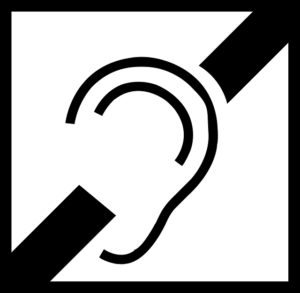
What Are The Advantages To Getting A Hearing Aid?
August 13, 2021
What Causes Tinnitus?
October 21, 2021There are four levels of deafness, each with its symptoms and hearing limits. Depending on the level of hearing loss, someone’s symptoms will either be mild or severe; the person may not be able to hear at all (deaf), or they may be able to hear very little (hard-of-hearing).
Mild Level Deafness
A person with a mild level of deafness might notice that they can’t always understand what people are saying around them or that it is difficult for them to follow along in group conversations. They might find it helpful to read lips, use visual supports like pictures instead of words, and sit close to the speaker during a conversation. If you suspect that you have mild level deafness, it might be wise to schedule an appointment with your Audiologist for a hearing test.
Moderate Level Deafness
A person who experiences moderate deafness may have trouble understanding conversations that are further away from them or in areas with lots of background noise. If you suspect that you have an average level of deafness, it is essential to visit your family doctor for a hearing test. A mild level of deafness can develop into a more severe level over time so it’s best not to wait until the problem gets worse before getting help. Depending on what they find during their exam and hearing test, your doctor may refer you to an ear specialist.
Severe Level Deafness
A person with severe deafness might not be able to hear any sounds at all or they may only be able to perceive loud noises. If you suspect extreme level deafness, it is essential to visit your family doctor for a hearing test. A mild level of deafness can develop into a more severe level over time so it’s best not to wait until the problem gets worse before getting help.
Deaf-Blind Level Deafness
People who are deaf-blind rely on visuals to communicate and process information. You might notice that if you are trying to talk with someone deaf-blind, they don’t seem to understand what you are saying, even when it seems like they should be able to pick up on the conversation based on their facial expressions. If this sounds familiar, the first step may be finding ways to communicate with them through writing, pictures, and gestures.
Depending on how severe their level of deafness is, a person who is deaf-blind may not be able to fully use lip-reading or visual cues to understand what is being said around them. For instance, if someone thinks that they have moderate hearing loss but can’t rely on visual language methods alone (like sign language), they likely have severe level deafness. In this case, it is important to visit your family doctor for a hearing test. A mild level of deafness can develop into a more severe level over time, so it’s best not to wait until the problem gets worse before getting help. Depending on what they find during their exam and hearing test, your doctor may refer you to an ear specialist.





